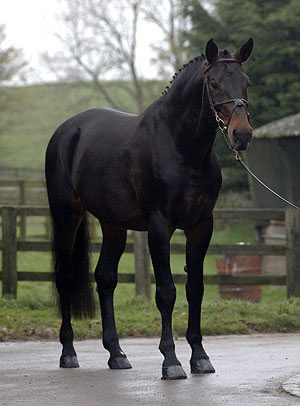General Description
The International Sporthorse Registry (ISR) was founded in 1982 as a service organization for American breeders who wanted to breed sport horses according to the methods and high standards developed in Europe. The International Sporthorse Registry's breeding philosophy of utilizing the best available breeding stock - regardless of breed or brand - was adapted from the German Oldenburg Verband in 1982. This was the foundation of the Oldenburg breed in North America.
The ISR established the Oldenburg Registry North America (OLD NA) for all stallions and mares that fulfill the high quality requirements and pedigree standards established by European registries. The principal goal of assisting the development of top performance horses in North America by establishing effective and uniform standards of evaluation and measurement lead to the implementation of:
- Evaluation, certification and licensing requirements for Breeding Stallions
- Evaluation of mares and foals prior to registration by qualified independent judges
- Performance testing for Stallions
- Registration documentation for horses accepted into the registry and their offspring
- Maintenance of a data base of breeding results for registered stallions and mares
- Providing ongoing services to member breeders
Additionally, the ISR/OLD NA established the goal to maintain an open Sporthorse Registry, believing most horses of "sport horse type" should be eligible for consideration for entry into the Registry, while maintaining an effective and uniform standard for evaluation. Therefore, warmblood breeds and Thoroughbreds are assured consideration within the established criteria guidelines.
The breeding goal is a noble, large-framed and correct horse with dynamic, spacious and elastic movements - well suited for dressage, hunter classes, show-jumping or eventing because of its temperament, character and rideability. This is the common breeding goal for sport horses all over the world. The Oldenburg's head is fine and noble, well set into the neck with a good throatlatch. The neck has to be sufficiently long with a good slooping line and a good head/neck connection. The shoulder has to be long and well positioned with a correct angle. To put saddle and rider into the right position, the withers must be long enough and well developed. The Oldenburg stands between 16.0 and 16.3 hands. A good topline, strong back and loin as well as a well-developed croup are goals of breeding. The legs have to be well muscled with well developed joints and sufficient bones with well formed hooves. The forelegs have to be straight from front and side with a long fore arm. Also the hind legs are straight as seen from behind with a good angle of the hocks. The horse carries himself and pushes well from hocks and hindquarters, develops elastic and energetic forward moving gaits with active long strides, as well as having a swinging back and good freedom of the shoulder.






